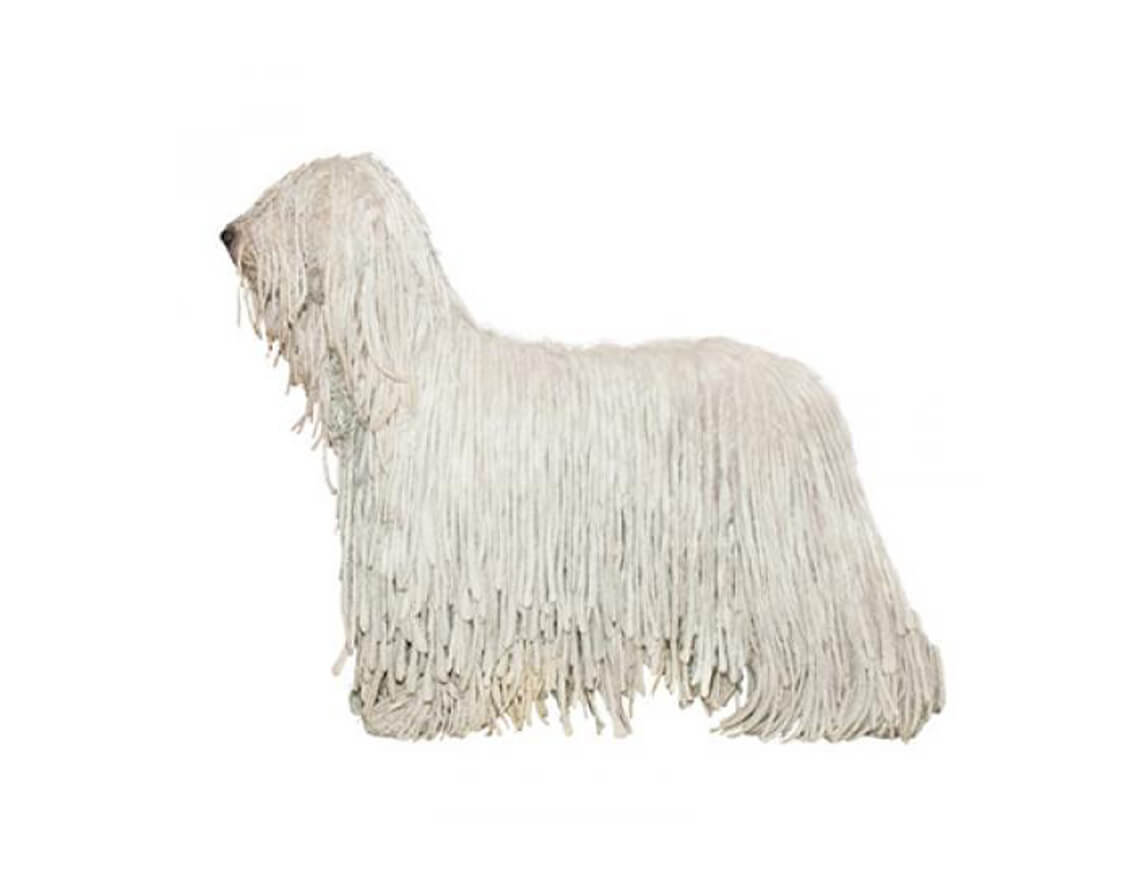
Komondor
Having a dense, protective white corded coat, the alert, confident Komondor is a large, muscular Hungarian dog bred to guard sheep and cattle. Fiercely loyal to his human companions, this courageous breed is extremely territorial and thrives on having a responsibility. Although somewhat inactive as an adult, the Komondor should be exercised and taken on several leash walks daily.
DID YOU KNOW? Descending from various Tibetan dogs and the Aftscharka, a breed discovered by the Huns while passing through Russia, the Komondor was imported to Hungary in the 14th century by nomadic Magyars. The distinctive corded coat of the Komondor, which begins to cord at 9 to 12 months of age, protects the guard dog from attack and weather extremes.
ALSO KNOWN AS: Hungarian Komondor, Hungarian Sheepdog, Mop Dog
The need-to-know
- Dog suitable for experienced owners
- Extra training required
- Enjoys active walks
- Enjoys walking an hour a day
- Large dog
- Minimum drool
- Requires grooming every other day
- Hypoallergenic breed
- Chatty and vocal dog
- Guard dog. Barks, alerts and it's physically protective
- May require training to live with other pets
- May require training to live with kids
Personality

Centuries of breeding to treat strangers with suspicion and possibly aggression, and protect and guard what they consider to be theirs mean this is not a breed for everyone. Even an easy going Komondor is still a large, powerful dog with a coat that demands a lot of time and attention to keep sweet smelling and easy to live with. Devoted to their family they will guard and protect but this may mean they make errors of judgement that could land themselves and their owners into trouble!
History and Origins

Country of Origin: Hungary
Known in their native homeland of Hungary for over a thousand years, the Komondor is a livestock guardian, bred to live with the flock and protect them from theft and predation. The corded coat would keep them warm and dry no matter the weather and provides a thick body armour effective against the fiercest of predators including wolves. Thought to have arrived in Hungary with the nomadic Magyars and possibly descended from the Ovtcharka, another livestock guardian breed from the Caucasian regions of Russia.
Nutrition and Feeding

Large breed dogs, as well as having large appetites, benefit from a different balance of nutrients including minerals and vitamins compared to smaller-breed dogs. The Komondor is prone to bloating and stomach problems; smaller, more frequent meals can help minimise this risk. Discover more about how to offer your dog a balanced diet with our easy-to-follow guide.
Exercise

About an hour of daily dog exercise will be needed for the Komondor, with additional time for training and puzzle solving exercises. Access to secure places to run free and a large, securely fenced garden are important.
Other Information

Health and Common Issues
The Komondor dog is generally a healthy, robust breed with no widely recognised breed specific health problems.
Space Requirements
Big dog, big coat, capable of collecting a lot of water and debris, a large property with extremely secure fencing is vital. The Komondor will take hours to dry out fully after a bath so their own dedicated room or a home set up for a large, hairy, wet dog is a must. Better suited to remote rural locations, the Komondor is likely to feel constantly on alert and stressed in a busy urban environment.
Training Komondor
Not an easy dog to train! Given their history, the Komondor has had many generations of breeding for suspicion towards strangers and a willingness to use aggression against any animal (including humans) that offers a perceived threat or confrontation. Very careful management must be in place to ensure these dogs do not make a mistake. The usual methods of positive reinforcement, patience and kindness are applicable in the Komondor’s dog training, but this is not a dog inclined to enjoy training for its own sake, or to repeat behaviours for the sake of a treat.
Best Family Dog Breeds
Suited to families with a lot of secure rural space, few visitors and a lot of time and energy for exercise, training and grooming. If they are to live as family dogs, they are better with dog savvy older teenagers – especially as the Komondor’s heavy corded coat makes their body language hard to read and their temperament is not given to tolerance of typical small child behaviour! While many dogs are traditionally thought of as being good with children, all dogs and children need to be taught to get on with each other and be safe together. Even so, dogs and young children should never be left alone together and adults should supervise all interactions between them.
Did You Know?
- A Komondor impressively clearing a high jump features on the 1996 album Odelay by the American artist Beck.
- It takes five years for the Komondors cords to reach full length and a fully coated corded Komondor can take 24 hours to dry after a bath!